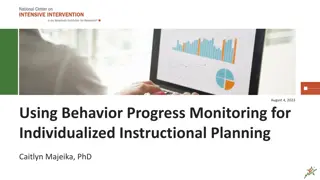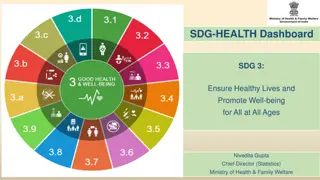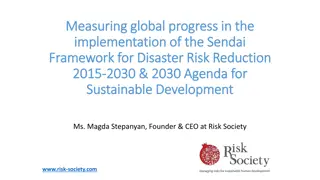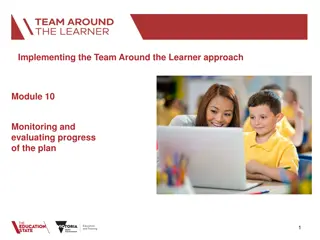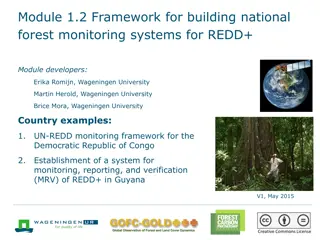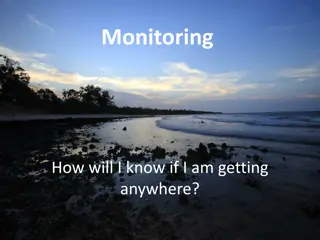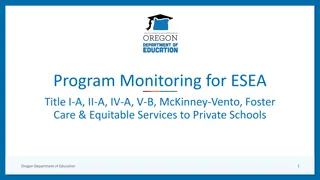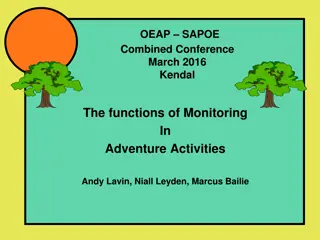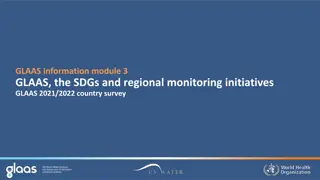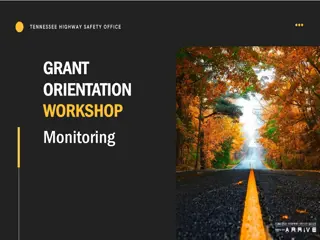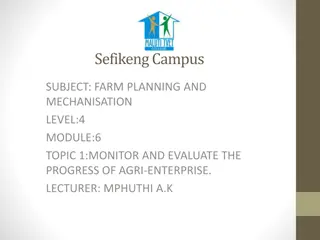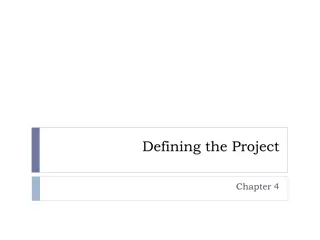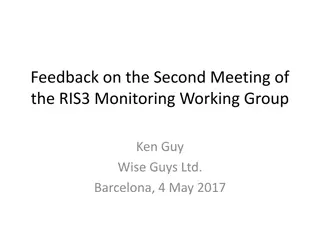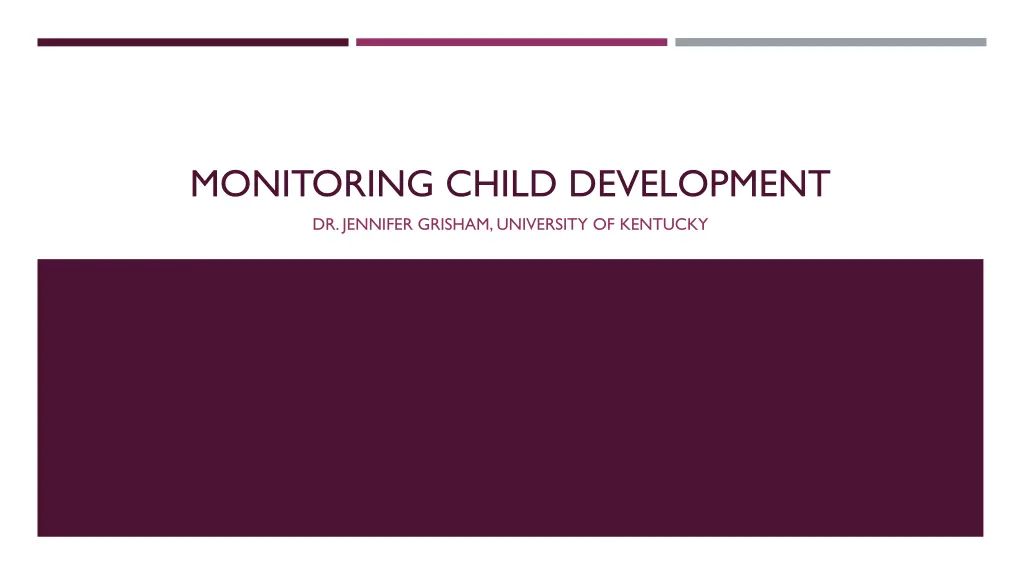
Child Development Monitoring and Assessment Strategies by Dr. Jennifer Grisham
Explore the importance of progress monitoring in identifying delays in children, strategies for assessing and treating young children, and developmental outcomes and assessment needs. Gain insights into prematurity assessment, cognitive development, and physical well-being evaluation in children with NAS under the guidance of Dr. Jennifer Grisham from the University of Kentucky.
Download Presentation

Please find below an Image/Link to download the presentation.
The content on the website is provided AS IS for your information and personal use only. It may not be sold, licensed, or shared on other websites without obtaining consent from the author. If you encounter any issues during the download, it is possible that the publisher has removed the file from their server.
You are allowed to download the files provided on this website for personal or commercial use, subject to the condition that they are used lawfully. All files are the property of their respective owners.
The content on the website is provided AS IS for your information and personal use only. It may not be sold, licensed, or shared on other websites without obtaining consent from the author.
E N D
Presentation Transcript
MONITORING CHILD DEVELOPMENT DR. JENNIFER GRISHAM, UNIVERSITY OF KENTUCKY
OBJECTIVES Participants will identify the importance of progress monitoring in identifying delays in children with NAS and following their progress Participants will identify strategies used for assessing and treating young children with NAS Participants will apply new knowledge of progress monitoring strategies to case example
Prematurity Assessment of physical well- being Motor, Language, & Cognitive Delays (memory & problem solving) Neurological assessments of delays Behavior disorders Behavioral assessments to identify hyperactivity and ADHD Childhood trauma Family assessment to identify support needs Visual defects Eye exam for visual defects DEVELOPMENTAL OUTCOMES AND ASSESSMENT NEEDS
Which of these conditions have you seen in children you ve worked with? Prematurity Motor, Language, or Cognitive Delays Behavior disorders Childhood trauma Visual defects POLL
ASSESSMENT OF PHYSICAL WELLBEING - NEONATAL ABSTINENCE SCORING SYSTEM (FINNEGAN & KALTHENBACH, 1992) Central Nervous System Disturbances (e.g., shaking, increased muscle tone) Metabolic/Vasomotor/Respiratory Disturbances (e.g., sweating, nasal flaring) Gastrointestinal Disturbances (e.g., poor feeding, loose stools)
COGNITIVE (THOUGHT) DEVELOPMENT Infant-Toddlers Systematic review of cognitive and motor outcomes of children with prenatal opioid exposure looking at children 6-24 months81 13 studies, 584 children with prenatal exposure, and 1496 controls Results: significant difference in neurocognitive development, with children with prenatal exposure performing lower Follow up study of 149 children maternal marijuana use (n=38); maternal cocaine (n=35); maternal methadone maintenance (n=24); and controls (n=49)177 methadone group had significantly lower cognitive scores compared to other groups 6
MOTOR DEVELOPMENT Motor Skills in Infancy: Some commonlyreported differences in motor outcomes include: Unusual motor patterns during first year of life including writhing and fidgety movements181 Increased occurrence of torticollis (head turn to one side)213 Higher incidence of differences in neurologic exams 177 For infants in the withdrawal process after birth, high muscle tone can lead to exaggerated back arching as the body moves into extension. Swaddling and non-nutritive sucking can help decrease these unusual body positions. 6 7
SPEECH & LANGUAGE DEVELOPMENT Long Term Outcomes (Birth to 10) Recent study observed language delays in children during their first 10 years of life (birth, 1, 5, and 10 years) comparing children with NAS and a "high risk" control group 214 Sample: 658 Children with NAS and 730 non-exposed controls At 1 year follow up 65% of children with NAS had language delay, compared to 74% of children without NAS At 5 year follow up 81% of children with NAS had language delay, compared to 82% of children without NAS At 10 year follow up 24% of children with NAS had language delay, compared to 12% of children without NAS Children with NAS had significantly different pattern of language delay over time, which calls for increased need for developmental monitoringthroughout early and middle childhood. More on language later in the series! 8
DEVELOPMENTAL ASSESSMENTS FOR DEVELOPMENT DELAYS Screening Ages and Stages Questionnaire Diagnosis Bayley Scales of Infant and Toddler Development III (language, motor, and cognition) Program Planning and Progress Monitoring in KY Assessment, Evaluation, and Program System (AEPS) Carolina Curriculum Hawaii Early Learning Profile
AGES AND STAGES QUESTIONAIRES-3 FEATURES For children birth to 5 Completed by parent in 2-3 minutes Can be re-administered every 2 months Online option Largest norm population for a screener over 12,000 Available in English, Spanish, & French Includes learning activities
BEHAVIOR Infant Some studies on behavioral differences suggest infants with NAS/prenatal opioid exposure may experience difficulties with behavior during infancy58, 72 Negative mood Decreased self-regulation of their own behaviors Increased sensory seeking behaviors 1 1
BEHAVIOR Toddler/Preschool Chart review (n=87) from a neonatal intensive care unit (NICU) follow up clinic of children with NAS. At 2 year visit, 26% of families reported significant behavioral or sleep difficulties 1 Including: tantrums, hyperactivity, sensory issues, and difficulty falling/staying asleep. Based on 5 articles observing behavioral consequences of opioid exposure in infants/preschoolers96 Five areas analyzed: growth, perceptual, emotional, intellectual, and behavioral capabilities. Not significant difference found compared to controls, however children with prenatal exposure had poorer trends in all domains Children born to mothers on buprenorphine maintenance (n=25) found14 Increased hyperactivity, impulsivity, attention problems 1 2
AGES AND STAGES SOCIAL-EMOTIONAL Personal-social (self-regulation, compliance, communication, adaptive functioning, autonomy, affect, and interaction with people) Ages birth to 60 months 6 month intervals In English and Spanish
CHILDHOOD TRAUMA AND SIGNS OF ITS IMPACT ON YOUNG CHILDREN Physical Abuse Physical Neglect Emotional neglect Sexual Abuse Parental Divorce Domestic violence Substance abuse Suicide attempt of family member Imprisonment of family member Regulation Issues (sleeping and eating) Increased anxiety Aggression Hyperactivity
FAMILY ASSESSMENT TO DETERMINE SUPPORT NEEDS Family/Caregiver Interview Considerations Purpose of interview (i.e., Determine needs of family? Identify goals for child? Determine family s perception of child s progress) Effective communication strategies Signaling openness Reflecting message Intentional inquiry Influencing skills Methods Routines based Skills based
VISION DEVELOPMENT Children with NAS have been observed to have increased risk of negative visual outcomes including: Nystagmus (eye movements)15, 88, 140 Strabismus (wandering eye movements)15, 88, 175 Decreased visual acuity or clearness15, 88 Cerebral Visual Impairment88; also called cortical visual impairment (CVI) Delayed visual maturation140 Failed visual exams130 Why this matters Visual impairment can have a significant impact on a child s development due to the importance of interacting and exploring your environment to learn. More on this later in series! 1 6
INTERVENTION STRATEGIES TO EMPHASIZE Screen all children, especially those that children with NAS and those impacted by trauma. Have conversationswith families about 1) child s routines at home (e.g., meals, sleeping), and 2) their concerns about their child s development Provide consistency and structure in the classroom. Use picture schedules to help children understand routines in the day. Create a quiet corner where children can go when they are overwhelmed and teach children strategies for calming their bodies. Remember! Children ARE NOT BAD! Often their challenging behavior is the result of physical or developmental challenges or the conditions in which they live or events they have experienced. What other interventions have you used? Enter in chat.
REFERENCES/RESOURCES Beckwith, A. M., & Burke, S. E. (2015). Identification of early developmental deficits in infants with prenatal heroin, methadone, and other opioid exposure, Clinical Pediatrics, 54(4), 328-335. Burke Harris, N. (2018). The deepest well: Healing the long-term effects of childhood adversity. Harrington, J., Logan, S., Harwell, C., Gardner, J., Swingle, J., McGuire, E., & Santos, R. (2012). Effective Analgesia Using Physical Interventions for Infant Immunizations. Pediatrics, 129, 815 82. Jansson, L. M., & Patrick, S.W. (2019). Neonatal Abstinence Syndrome. Pediatric Practices of North America, 62(2), 353-368. Karp, H. (2002). The happiest baby on the block. NY: NY. Bantam. Kocherlakota, P. (2014). Neonatal Abstinence Syndrome, Pediatrics, 134(2): p.e-547-e-561. doi:10.1542/peds.2013-3524 Konijnenberg, C et al. (2012). A Melinder, Neurodevelopmental Investigation of the Mirror Neuron System in Children of Women receiving Maintenance Therapy during Pregnancy, Addiction Res Report. Rodr guez, J. J., & Smith, V. C. (2018). Prenatal Opioid and Alcohol Exposure: Understanding Neonatal Abstinence Syndrome and Fetal Alcohol Spectrum Disorders to Safeguard Maternal and Child Outcomes.ZERO TO THREE,38(5), 23 28.
TEAM KY SCOPE CHILD CHALLENGE DR. JENNIFER GRISHAM, UNIVERSITY OF KY IECE 19
BACKGROUND ON CASE Jaden is a 3 year old boy who attends a licensed child care center. Jaden lives with his maternal grandmother who has multiple health problems and is also raising Jaden s 18 month old sister. Jaden witnessed a drug bust at his home and saw the police arrest his parents, who are both now in jail. Although not substantiated, the program suspects that Jaden was prenatally exposed to drugs since his mother was addicted to heroin a year ago when she was arrested. Prior to attending the center, Jaden had not received any early intervention services and had not previously been enrolled in group care. 20
CHILD AND FAMILY STRENGTHS Jaden has excellent expressive communication skills. He understands all teacher directions, asks inquiring questions, and answers questions in full sentences. Also, Jaden has the ability to interact with toys appropriately. He enjoys playing with blocks and will create complex block structures. Jadon s grandmother provides a loving environment for him, and he is always happy to see her when she picks him up in the afternoon. She wants badly for Jaden to succeed and frequently asks the teacher for suggestions for things she can do with him at home. 21
PRIMARY AREAS OF CHALLENGE Jaden engages in multiple challenging behaviors including hitting children and teachers in the classroom, tearing up materials and cussing at teachers. During naptime he will not rest and is disruptive to the other children. While Jaden s grandmother tries very hard to support her grandson s development, her health issues leave her very tired and the baby s needs sometime take precedence over helping Jaden. Also, she has a very difficult time getting Jaden to sleep and staying asleep which makes it difficult for her to rest. 22
BARRIERS AND GOALS FOR THIS CHALLENGE Barriers: Behavioral concerns for Jaden; intervention support for Jaden; support for his grandmother Goals: Improved behavior for Jaden; concrete support for his grandmother 23


